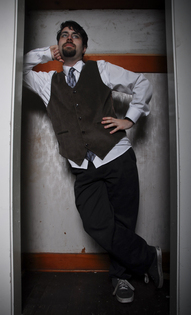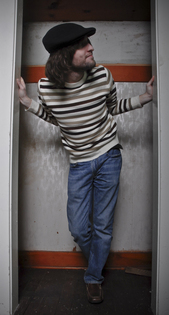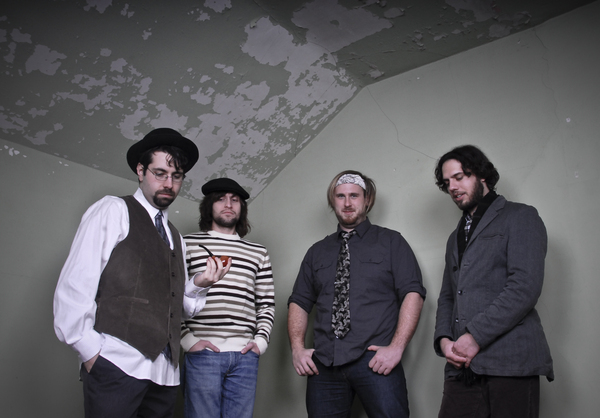



(Stephen Dranger, Mike Regan, Matt Sigler, and Lucas Sgouros)
Silhavey is a rock and roll band of sorts: melodic, epic, exciting, loud, and other adjectives that are frankly meaningless to most people. What does it really sound like? You'll have to listen to it. We guarantee it'll be stuck in your head afterwards.
But you don't have to take my word for it. Hear what real live people have to say about us!

THE HISTORY OF SILHAVEY
From Wikipedia, the free encyclopedia
Silhavey started in 1931 when they were the first to take hollow bodied acoustic instruments and coiled pickups to create electrically amplified guitars and combined them with the drum set that Silhavey drummer Matt Sigler put together, made possible by his invention of the bass drum pedal in 1909. The very first band to begin releasing their music on pressed vinyl discs, Silhavey began touring to sell these "albums," playing their unique brand of music at pool halls across the country.
In 1951, Cleveland disk jockey Alan Freed was the first person to use the term "rock'n'roll" to refer to the band's music, a label which many other acts began using. In 1955, the band went into the studio again to record an album, this time using a special machine to record different tracks onto analog tape, making the world's first album recorded on a multitrack tape machine. The album was a success, and in 1966, their follow-up album, Pet Sounds, pushed the envelope even further. The album was also the very first to be released on the new 8-track technology.
By the 1980s, the band had suffered a major decline until they hit upon the idea of recording a video to accompany their music. This "music video" sparked a trend that eventually became Music Television, and their video was the first to air on that television station. The response to the new record was huge, so large in fact that record stores began running out of space to carry their physical albums. In response, Silhavey invented new "compact discs" that would be read by scientific lasers instead of poly-alloy groove needles.
In order to take advantage of this new "digital" medium, Silhavey also fashioned their own instruments that would use electronic parts to create audio waves fashioned out of 1s and 0s. These fashioners, or "synthesizers" as they became known, were able to reproduce any audio signal that could be imagined. The first audio signal to be reproduced, or "synthesized," was a dog barking.
As we approach the dawn of the new millenium, what new music can we expect to hear from them? What frontiers will they explore next?



![[music player]](imgs/musicnote_black.png)